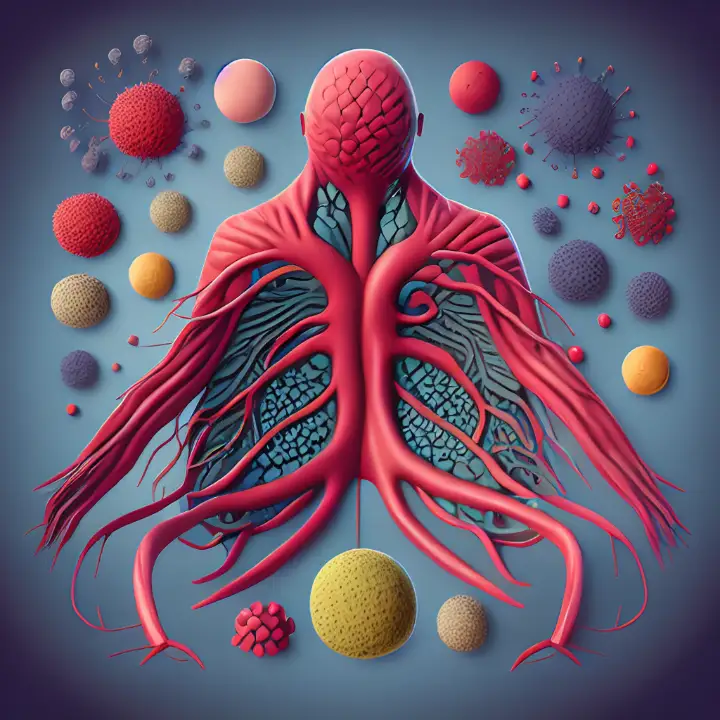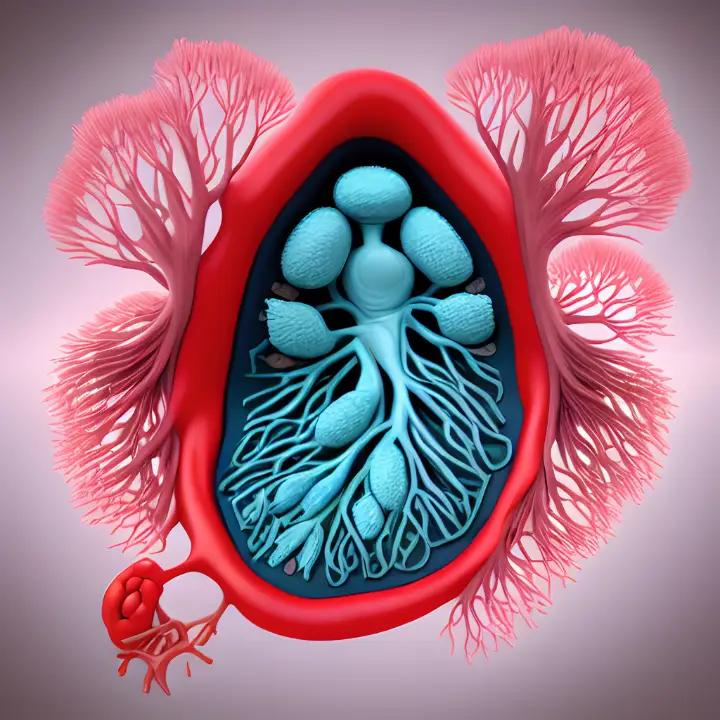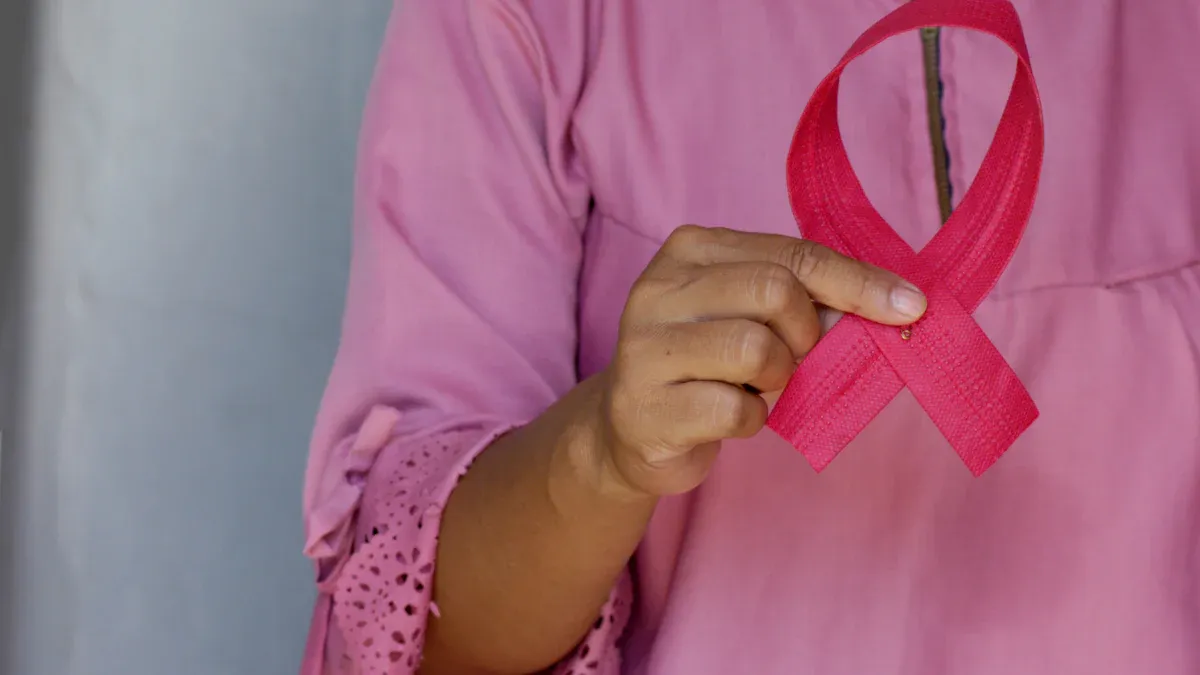What Is Non-Hodgkin Lymphoma and How Does It Affect You

Non-Hodgkin lymphoma is a type of cancer that begins in lymphocytes, the white blood cells responsible for defending your body against infections. This condition disrupts the immune system, making it harder for your body to fight diseases. It is one of the most common lymphomas, with approximately 80,350 new cases expected in the U.S. by 2025. While the 5-year relative survival rate is around 74%, early detection plays a crucial role in improving outcomes. Understanding this disease can help you recognize its potential impact on your health and seek timely medical care.
Key Takeaways
Non-Hodgkin lymphoma is a type of cancer. It harms the immune system by affecting white blood cells called lymphocytes, which fight infections.
Finding it early is very important. Symptoms like swollen lymph nodes, fever without a reason, and sweating at night mean you should see a doctor quickly.
Knowing the difference between slow-growing and fast-growing lymphomas is helpful. Slow ones grow over time, but fast ones need quick treatment.
Changes in genes and things like pesticide exposure can raise the chance of getting Non-Hodgkin lymphoma. Staying healthy might lower this risk.
Going to the doctor often is important to manage this cancer. Regular check-ups can help find it early and improve treatment results.
What Is Non-Hodgkin Lymphoma?
Definition and Overview
Non-Hodgkin lymphoma is a cancer that develops in lymphocytes, which are white blood cells essential for your immune system. These cells help your body fight infections and diseases. When genetic mutations occur in lymphocytes, they can grow uncontrollably, leading to this type of lymphoma. Non-Hodgkin lymphoma is the eighth most common cancer in the United States, with over 80,000 new cases expected annually. It includes two main types: aggressive lymphomas, which grow quickly and require immediate treatment, and indolent lymphomas, which grow slowly and may not need treatment right away.
Type of Lymphoma | Growth Rate | Treatment Approach |
|---|---|---|
Indolent | Slow | |
Aggressive | Fast | Requires immediate treatment |
How It Differs from Hodgkin Lymphoma
Non-Hodgkin lymphoma differs from Hodgkin lymphoma in several ways. While Hodgkin lymphoma often starts in lymph nodes in the upper body, such as the neck or chest, Non-Hodgkin lymphoma can begin in lymph nodes anywhere in your body. Both types may cause painless swelling of lymph nodes, but Non-Hodgkin lymphoma tends to spread more unpredictably. Another key difference lies in the cells involved. Hodgkin lymphoma is identified by the presence of Reed-Sternberg cells, which are absent in Non-Hodgkin lymphoma.
Symptom/Characteristic | Hodgkin Lymphoma | Non-Hodgkin Lymphoma |
|---|---|---|
Common Age Group | 15-40 years and over 55 | Typically over 60 years |
Initial Symptoms | Fever, weight loss, night sweats, lymph node pain with hot baths/alcohol | Fever, weight loss, night sweats |
Lymph Node Location | Upper body (neck, underarms, chest) | Anywhere in the body |
Presence of Reed Sternberg Cells | Yes | No |
Where It Originates in the Body
Non-Hodgkin lymphoma originates in the lymphatic system, which includes lymph nodes, the spleen, bone marrow, and the thymus. These areas are part of your immune system and play a role in filtering harmful substances from your body. The cancer can start in any of these locations, depending on whether it involves B lymphocytes or T lymphocytes. B lymphocytes are the origin of most cases, while T lymphocytes are less commonly involved.
Common origins of Non-Hodgkin lymphoma:
Lymph nodes
Bone marrow
Spleen
Thymus
Types of Non-Hodgkin Lymphoma
B-Cell vs. T-Cell Lymphomas
Non-Hodgkin lymphoma is classified based on the type of lymphocyte it affects. These lymphocytes are part of your immune system and include B cells and T cells. B-cell lymphomas are the most common, making up about 85% of all cases. They originate from B lymphocytes, which produce antibodies to fight infections. Examples of B-cell lymphomas include diffuse large B-cell lymphoma and follicular lymphoma.
T-cell lymphomas, on the other hand, arise from T lymphocytes. These cells play a role in directly attacking infected or cancerous cells. Although less common, T-cell lymphomas include subtypes like peripheral T-cell lymphoma and anaplastic large cell lymphoma.
Note: Understanding whether the lymphoma involves B cells or T cells helps doctors determine the best treatment approach for you.
Indolent vs. Aggressive Lymphomas
Non-Hodgkin lymphoma is also categorized by how quickly it grows and spreads. Indolent lymphomas grow slowly and may not cause noticeable symptoms for years. Examples include follicular lymphoma and marginal zone lymphoma. These types often have a better prognosis, with survival rates for localized follicular lymphoma reaching 97%.
Aggressive lymphomas, such as diffuse large B-cell lymphoma and Burkitt’s lymphoma, grow and spread rapidly. They often require immediate treatment due to severe symptoms. For example, the 5-year survival rate for localized diffuse large B-cell lymphoma is 73%.
Type of Lymphoma | Growth Rate | Example Subtypes | 5-Year Survival Rate (Localized) |
|---|---|---|---|
Indolent | Slow | Follicular | 97% |
Aggressive | Fast | Diffuse Large B-Cell | 73% |
Treatment for aggressive lymphomas often involves combination chemotherapy, immunotherapy, or even stem cell transplants. Indolent lymphomas may not need immediate treatment, but regular monitoring remains essential.
Early detection plays a critical role in managing both indolent and aggressive forms of Non-Hodgkin lymphoma.
Symptoms of Non-Hodgkin Lymphoma

Common Symptoms
Non-Hodgkin lymphoma often presents with symptoms that can vary widely. You may notice painless swelling in lymph nodes, which often appear as lumps under the skin in areas like the neck, underarm, or groin. Persistent fatigue is another common sign, leaving you feeling unusually tired even after rest. Other symptoms include:
Unexplained fever
Drenching night sweats that soak your sheets
Unexplained weight loss, often more than 10% of your body weight over six months
Abdominal pain or swelling
Chest pain, cough, or trouble breathing
A sensation of fullness after eating small amounts
Itchy skin or rashes
These symptoms may develop gradually or appear suddenly, depending on the type of lymphoma.
Symptoms Based on Lymphoma Type
The symptoms of Non-Hodgkin lymphoma can differ depending on whether it is indolent or aggressive. Indolent lymphomas grow slowly and may cause mild symptoms, such as painless lymph node swelling or fatigue. Aggressive lymphomas, however, progress rapidly and often lead to severe symptoms like chest pain, difficulty breathing, or significant weight loss.
You might also experience frequent infections or easy bruising and bleeding, especially if the lymphoma affects your bone marrow. Swelling in the abdomen or a feeling of bloating could indicate an enlarged spleen. Recognizing these variations can help you understand the urgency of seeking medical care.
When to Seek Medical Attention
Certain warning signs should prompt you to consult a healthcare provider. These include:
Persistent swelling in lymph nodes, especially in the neck, underarm, or groin
Fever without a known cause
Night sweats that disrupt your sleep
Unexplained weight loss or loss of appetite
Severe fatigue that affects daily activities
Chest pain, abdominal pain, or a sensation of bloating
Early detection of Non-Hodgkin lymphoma improves treatment outcomes. If you notice any of these symptoms, schedule a medical evaluation promptly.
Causes and Risk Factors of Non-Hodgkin Lymphoma
Genetic Mutations and Cellular Changes
Non-Hodgkin lymphoma often begins with genetic mutations in lymphocytes. These mutations cause abnormal cell growth and prevent the cells from dying when they should. Specific genetic changes, such as translocations, play a significant role in the development of this cancer. Translocations occur when parts of chromosomes swap places, disrupting normal cell function.
Translocation | Associated Gene(s) | Implication |
|---|---|---|
t(14;18)(q32;q21) | bcl-2 | Common in follicular lymphomas, inhibits cell death (apoptosis) |
t(11;14)(q13;q32) | bcl-1 | Linked to mantle cell lymphoma, causes overproduction of cyclin D1 |
8q24 | c-myc | Found in high-grade lymphomas like Burkitt lymphoma, leads to rapid growth |
These genetic changes disrupt the balance between cell growth and death, leading to the uncontrolled proliferation of lymphocytes. Understanding these mutations helps doctors identify the type of lymphoma and choose the best treatment.
Immune System Disorders
Your immune system plays a crucial role in protecting you from diseases, but certain disorders can increase your risk of Non-Hodgkin lymphoma. Autoimmune diseases, such as rheumatoid arthritis and systemic lupus erythematosus, are strongly linked to this cancer. These conditions cause your immune system to attack healthy tissues, leading to chronic inflammation and increased lymphocyte activity.
Autoimmune diseases associated with higher risk:
Rheumatoid arthritis
Systemic lupus erythematosus (SLE)
Sjögren’s syndrome
Celiac disease
A weakened immune system also raises your risk. This can occur due to HIV infection, organ transplants, or treatments that suppress immunity. When your immune defenses are compromised, abnormal lymphocytes are more likely to grow unchecked.
Environmental and Lifestyle Factors
Certain environmental exposures and lifestyle choices can contribute to the development of Non-Hodgkin lymphoma. Pesticides, particularly glyphosate and organophosphates, have been identified as potential carcinogens. People working in agriculture or exposed to these chemicals face a higher risk.
Key environmental and lifestyle risk factors:
Pesticide exposure, especially in agricultural settings
Radiation therapy for other cancers
Weakened immune systems from HIV or organ transplants
Autoimmune diseases like lupus and rheumatoid arthritis
Excess body weight
Reducing exposure to harmful chemicals and maintaining a healthy lifestyle may help lower your risk. If you have a weakened immune system or an autoimmune condition, regular check-ups can aid in early detection.
How Non-Hodgkin Lymphoma Affects the Body

Impact on the Immune System
Non-Hodgkin lymphoma directly affects your immune system because it originates in lymphocytes, which are essential for fighting infections. When these cells become cancerous, they lose their ability to function properly. This weakens your immune system, making it harder for your body to defend against infections and diseases. Over time, the abnormal lymphocytes can crowd out healthy ones, further reducing your immune response.
You may notice that you get sick more often or take longer to recover from illnesses. This happens because your immune system struggles to identify and eliminate harmful invaders. In some cases, the lymphoma itself can trigger immune system dysfunction, leading to autoimmune-like symptoms where your body attacks its own tissues.
Potential Complications
If left untreated, Non-Hodgkin lymphoma can lead to serious complications. The cancer may spread to other parts of your body, including the liver, lungs, or brain. This can cause organ damage and disrupt their normal functions. For example, lymphoma in the brain may lead to neurological symptoms like headaches, confusion, or seizures.
Another common complication involves the bone marrow. When lymphoma spreads here, it can interfere with blood cell production. This may result in anemia, frequent infections, or easy bruising and bleeding. Additionally, treatments like chemotherapy can weaken your immune system further, increasing your risk of infections.
Tip: Regular monitoring and early treatment can help prevent these complications and improve your quality of life.
Importance of Early Detection and Treatment
Detecting Non-Hodgkin lymphoma early significantly improves your chances of successful treatment. Various diagnostic tools can help identify the disease at an early stage. For example:
Test Type | Description |
|---|---|
Ultrasound | Examines lymph nodes near the surface and inside the abdomen for enlargement. |
PET Scan | Uses a radioactive sugar to detect cancer cells and monitor treatment response. |
Bone Scan | Identifies damaged bone areas to check for lymphoma spread. |
Blood tests, such as a complete blood count (CBC), can also reveal abnormalities like low blood cell counts, which may indicate lymphoma in the bone marrow. In some cases, a lumbar puncture is performed to check if the cancer has spread to the central nervous system.
Early detection allows doctors to start treatment before the disease progresses. This can include chemotherapy, immunotherapy, or targeted therapies tailored to your specific type of lymphoma. By addressing the disease early, you can reduce complications and improve your overall prognosis.
Non-Hodgkin lymphoma presents with symptoms like fever, night sweats, and unexplained weight loss, often referred to as "B symptoms." You may also notice swollen lymph nodes, fatigue, or chest discomfort. This cancer arises from genetic mutations in lymphocytes, with risk factors including age, immune deficiencies, and pesticide exposure.
Early detection is crucial. Regular check-ups and a healthy lifestyle—rich in fruits, vegetables, and physical activity—can reduce your risk. If you experience persistent symptoms, consult a healthcare professional promptly to ensure timely diagnosis and treatment.
FAQ
1. What is the difference between indolent and aggressive Non-Hodgkin lymphoma?
Indolent lymphomas grow slowly and may not cause symptoms for years. Aggressive lymphomas grow quickly and often require immediate treatment. Doctors classify the type based on growth rate and symptoms to determine the best treatment plan for you.
2. Can Non-Hodgkin lymphoma spread to other parts of the body?
Yes, it can spread to organs like the liver, lungs, or brain. This process, called metastasis, may cause additional symptoms such as neurological issues or organ dysfunction. Early detection and treatment reduce the risk of spread.
3. Is Non-Hodgkin lymphoma curable?
Many cases are treatable, and some can be cured, especially with early detection. Treatment options include chemotherapy, immunotherapy, and targeted therapies. Your prognosis depends on the type, stage, and response to treatment.
4. How is Non-Hodgkin lymphoma diagnosed?
Doctors use tests like biopsies, blood tests, and imaging scans (e.g., PET or CT scans) to diagnose it. These tests help identify the type and stage of lymphoma, guiding your treatment plan.
5. What lifestyle changes can help during treatment?
Eating a balanced diet, staying active, and managing stress can support your body during treatment. Avoiding infections by practicing good hygiene is also important. Always follow your doctor’s advice for specific lifestyle adjustments.
Tip: Regular follow-ups with your healthcare provider ensure better management of your condition.
---
ℹ️ Explore more: Read our Comprehensive Guide to All Known Cancer Types for symptoms, causes, and treatments.
See Also
Understanding Hodgkin's Lymphoma: Key Symptoms to Recognize
Follicular Lymphoma Explained: Symptoms You Should Know
Anaplastic Large Cell Lymphoma: Treatment Options and Overview
Lymphoplasmacytic Lymphoma: Symptoms and Important Information
Identifying Angioimmunoblastic T-Cell Lymphoma: Symptoms Overview
